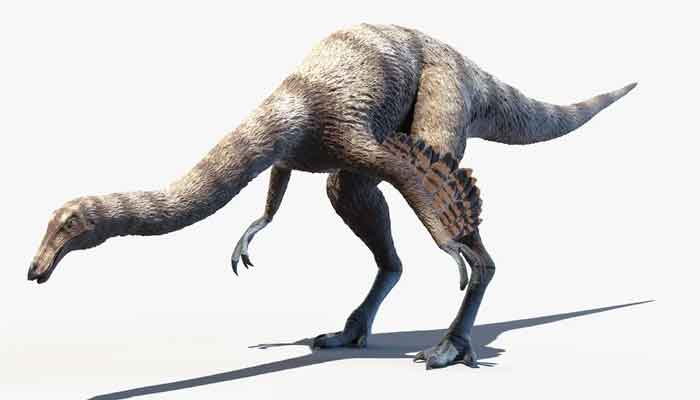
It was widely believed that all dinosaurs were cold-blooded, slow-moving animals before the mid-1960s.
However in the summer of 1964, a team of paleontologists led by John Ostrom discovered Deinonychus, a dinosaur equipped with large, sickle-shaped claws; a lightweight body; and strong legs, reported Live Science.
The fossil suggested the animal was fast and agile.
Some dinosaurs were shown as active and nimble by the discovery and so began the “dinosaur renaissance” — a scientific shift that redefined our understanding of dinosaurs by showing that many were faster than previously assumed.
Speediest dinosaur
“The fastest dinosaur was likely an Ornithomimosauria,” Susannah Maidment, a paleontologist at the Natural History Museum in London, told Live Science.
These lanky bipedal dinosaurs from the Late Cretaceous period are often described as ostrich-like, with features that suggest they were built for speed, she added.
“Generally, if you have long, slender limbs and your muscle attachments are located near the top of those limbs, then your leg basically functions like a pendulum, which suggests that you can move relatively quickly,” Maidment said.
Moreover, to determine which dinosaur was the fastest, we can turn to biomechanics.
In the early 1970s, zoology professor Robert McNeill Alexander pioneered the field of biomechanics by applying physics and engineering to the study of animal movement.
Alexander discovered a link between leg length and stride length by observing modern animals, that could be used to estimate an animal’s speed
“The faster an animal walks or runs,” Alexander determined, “the longer in general are its strides.”
Caught up in the dinosaur renaissance, Alexander brought his knowledge of animal locomotion to the study of dinosaurs.
Researchers have measured dinosaurs’ stride distances and foot size from trackways and compared them to known leg lengths of existing fossils for years to estimate a dinosaur’s speed.
However, Maidment said this method is imprecise.
